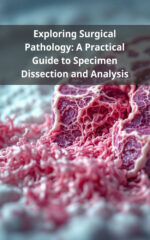Description
This book is divided into 10 chapters, each of which focuses on a specific aspect of drug delivery. Chapter 1 introduces the basic principles of drug delivery, including the different routes of administration and the factors that influence drug absorption and distribution. Chapter 2 discusses oral drug delivery, covering the various types of oral drug delivery systems, bioavailability enhancement strategies, and patient adherence issues.
Chapter 3 focuses on parenteral drug delivery, which involves the administration of drugs through injection. It discusses the different types of parenteral drug delivery systems, including injectable, transdermal, ocular, and nasal drug delivery systems. Chapter 4 explores pulmonary drug delivery, covering the anatomy and physiology of the respiratory tract, the different types of pulmonary drug delivery devices, and the factors affecting pulmonary drug absorption and deposition.
Chapter 5 discusses transmucosal drug delivery, which involves the administration of drugs through the mucosal membranes. It covers the different types of transmucosal drug delivery systems, including buccal, sublingual, nasal, ocular, vaginal, rectal, and transdermal drug delivery systems. Chapter 6 focuses on targeted drug delivery, which involves the use of specific targeting ligands or carriers to deliver drugs to specific cells or tissues.
Chapter 7 explores controlled release drug delivery, which involves the design of drug delivery systems that release drugs at a predetermined rate over a sustained period of time. Chapter 8 discusses drug delivery to the central nervous system, covering the challenges of drug delivery to the brain, the different strategies for overcoming these challenges, and the potential applications of drug delivery to the central nervous system for the treatment of neurodegenerative diseases, brain tumors, and psychiatric disorders.
Chapter 9 focuses on drug delivery for infectious diseases, covering the different types of antimicrobial agents, the challenges of drug delivery to specific sites of infection, and the development of novel drug delivery systems for the treatment of infectious diseases. Chapter 10 explores drug delivery for cancer, covering the different types of cancer chemotherapy drugs, the challenges of drug delivery to tumor cells, and the development of novel drug delivery systems for the treatment of cancer.
**Drug Delivery: Ready Reference for Pharmacists and Technicians** is an essential resource for pharmacists, technicians, and other healthcare professionals involved in the development, manufacture, and administration of drug delivery systems. It is also a valuable reference for students and researchers in the field of drug delivery.
If you like this book, write a review!
Language : English
Dimensions : 6 x 9 inches
Pages : 186 pages
Pasquale De Marco stands as a prolific author whose literary prowess knows no bounds. With a passion for storytelling that transcends genres, he has made a name for himself as a versatile writer with the extraordinary ability to captivate readers across diverse literary landscapes. His journey as an author is marked by an insatiable curiosity, a love for the written word, and a relentless commitment to sharing knowledge and experiences with the world.
Pasquale De Marco collaborates with a dedicated team of ghostreaders who assist him in evaluating and editing the manuscripts. His collaborators are not only skilled professionals but also avid readers who purchase and read books as a personal hobby. This unique blend of creativity allows Pasquale to push the boundaries of traditional publishing, making literature more accessible and diverse.






Reviews
There are no reviews yet